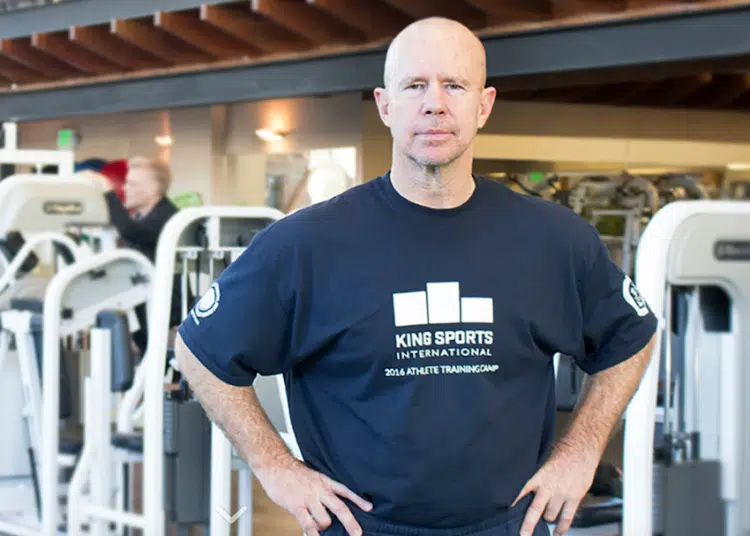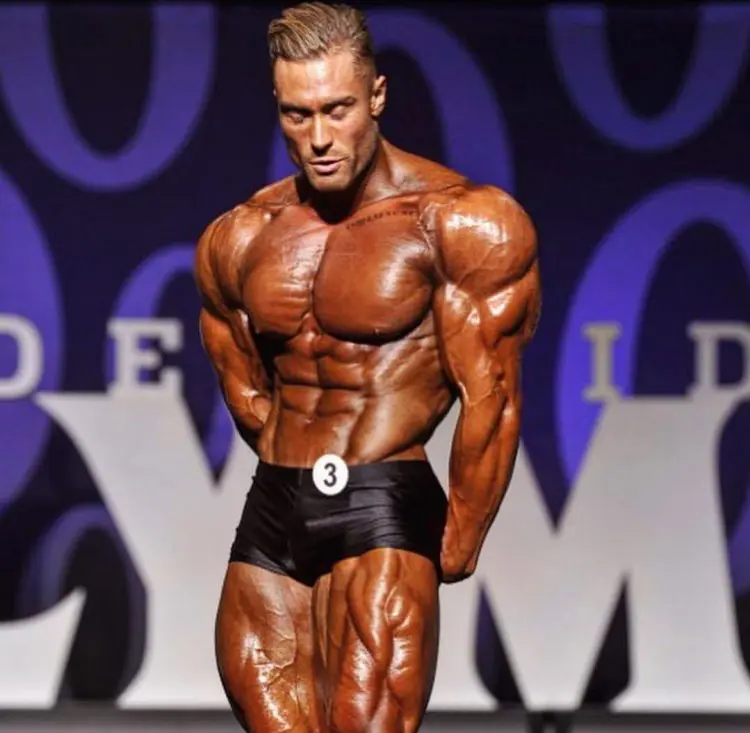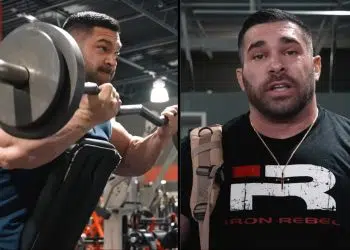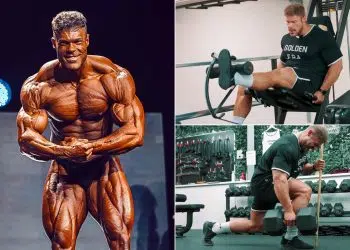Almost everyone who lifts weights has a favorite split routine, and when it comes to planning your workouts, there are many options to choose from. Popular workout splits include:
- Upper body/lower body
- Push/pull/legs
- Agonist/synergist
- One body part per day
- One lift per day
The reason that there are so many split routines is that they all work. Providing you train hard enough and are consistent, even a poorly designed program will produce at least some results.
And therein lies the rub; while a poorly constructed workout plan will still work, it can also cause problems. For example, it’s all too easy to spend more time than you should training your favorite muscle groups and not enough time on the rest of your body. That’s why so many training programs are dominated by chest and arm exercises.
And that’s where the functional training split comes in. It’s an almost foolproof way to create a balanced workout program that ensures all muscle groups are trained equally.
In this article, we’re going to explain what the functional training split is, why it’s so valuable and effective, and provide you with a couple of sample workouts to follow.
Read more about the 12 best workout splits here.
Level Up Your Fitness: Join our 💪 strong community in Fitness Volt Newsletter. Get daily inspiration, expert-backed workouts, nutrition tips, the latest in strength sports, and the support you need to reach your goals. Subscribe for free!
Functional Training Split Overview
Most split routines organize your workouts by muscle group. For example, you might train your chest and triceps one day and your back and biceps the next, and your legs after that.
But, there is a problem with this approach; it’s all too easy to create an unbalanced workout.
If you look at most training programs, invariably, they involve far more pushing (chest, shoulders, triceps) than pulling (back, biceps) exercises, and upper body training almost always outweighs lower body training.
With the functional training split, instead of thinking in terms of muscle groups, exercises are arranged according to their main joint action and plane of movement. This ensures that all muscles are trained equally.
The functional training split was invented and popularized by Australian strength coach Ian King in his book “Get Buffed,” which was a terrible title for what is actually one of the best books ever written on strength training program design.

King believed that by focusing more on movements than individual muscles, it was possible to not only increase muscle mass and strength, but develop functional balance, improve posture, reduce the risk of chronic injury, and increase athletic performance, all at the same time.
The functional split uses this framework and usually involves four training days per week:
| Workout One | Workout Two | Workout Three | Workout Four |
| Upper body vertical push and pull, plus elbow flexion/ extension | Lower body, hip-dominant exercises plus calves | Upper body horizontal pull and push, plus elbow flexion/extension | Lower body, knee-dominant exercises plus calves |
As you can see, there is no mention of things like chest or shoulders but using this split will ensure all muscle groups are trained equally.
You may be unfamiliar with classifying exercises according to the dominant movement, so here is a brief list of example exercises grouped by their anatomical function:
| Movements | Details |
| Upper body vertical push | Barbell/dumbbell shoulder press, shoulder press machine, handstand push-ups |
| Upper body vertical pull | Pull-ups, chin-ups, lat pulldowns, pullovers |
| Upper body horizontal push | Barbell bench press, dumbbell bench press, push-ups, dips, chest press machine |
| Upper body horizontal pull | Seated rows, single-arm rows, bent-over rows, incline rows, Pendlay rows |
| Elbow flexion | Barbell, cable, and dumbbell biceps curls |
| Elbow extension | Triceps kickbacks, overhead extensions, pushdowns, skull crushers |
| Lower body hip dominant | Deadlifts, Romanian deadlifts, good mornings, leg curls, hip thrusts |
| Lower body knee dominant | Back squats, front squats, box squats, leg press, leg extensions, lunges |
| Calves | Standing calf raise, seated calf raise, donkey calf raise, single-leg calf raise |
Admittedly, some exercises are a little harder to classify, for example, side raises and upright rows. Generally speaking, shoulder exercises like side raises fit best into the vertical push exercise, while upright rows could be put in either of the upper body pulling groups.
Just use your common sense and put any hard to classify movements in the most logical place while staying true to the spirit of the workout.
What about hip abduction and adduction?
For reasons unknown, coach King does did not include specific hip abduction or adduction exercises in his framework. However, they’d be very easy to add. If you value these movements, you could include a hip abduction exercise on the knee-dominant day and a hip adduction exercise on the hip-dominant day, or vice versa. Remember, though, your hip abductors and adductors are involved in all lower body exercises as stabilisers, so while these movements can be important, you may not need to spend a lot of time and energy training them in isolation.
Functional Training Split Advantages and Benefits
There are several advantages and benefits to following a functional split:
Structural balance
Muscles are arranged in opposing pairs across joints, such as biceps and triceps and quadriceps and hamstrings. For joint health, posture, and optimal function, both muscles in each pair should be trained equally and be similar in strength. Imbalances can lead to poor posture and joint pain.
Level Up Your Fitness: Join our 💪 strong community in Fitness Volt Newsletter. Get daily inspiration, expert-backed workouts, nutrition tips, the latest in strength sports, and the support you need to reach your goals. Subscribe for free!
The functional split ensures that pairs of muscles are developed evenly. For example, for every vertical pushing exercise you do, there will be a corresponding vertical pulling exercise.

Better balance between upper and lower body training
A lot of training splits involve just one lower body workout per week. Unless you are blessed with great genetics, that’s probably not enough to maximize leg development. With the functional training split, you train your legs twice a week.
Suitable for all training goals
It doesn’t matter if you are a bodybuilder, powerlifter, strongman competitor, or just work out for health and fitness; you can adapt and use the functional training split to train for any goal. It’s a very versatile framework. The same cannot be said for most body part split routines.
Four days per week is the ideal training frequency for most people
The functional split involves four workouts per week, which provides an almost perfect balance between training and rest. Four workouts per week are manageable and sustainable for most people. Training more often will probably not produce better results and could lead to overtraining.
Perfect for time-saving supersets
You can make your upper body workouts more time-efficient with agonist vs. antagonist supersets. For example, for your horizontal push and pull workout, you could alternate between bench presses and wide-grip bent-over rows, essentially halving the amount of time spent resting per workout.
Flexible training days
Because there are minimal overlaps between training days, you can perform your workouts (W/O) in several different ways.
For example:
| Monday | Tuesday | Wednesday | Thursday | Friday | Saturday | Sunday |
| W/O 1 | W/O 2 | Rest | W/O 3 | W/O 4 | Rest | Rest |
| W/O 1 | W/O 2 | W/O 3 | W/O 4 | Rest | Rest | Rest |
| W/O 1 | W/O 2 | Rest | W/O 3 | Rest | W/O 4 | Rest |
| Rest | W/O 1 | Rest | W/O 2 | Rest | W/O 3 | W/O 4 |
This makes the functional workout split ideal for exercisers who find it hard to commit to training the same days each week. Instead, you can just keep rotating through the four workouts, training as and when your schedule allows.
Missing a workout is not a complete disaster
With a body part split, a missed workout can have a significant impact on your training. For example, if you miss chest day, it could be another week before you can get back on track.
With the functional training split, even if you miss a workout, many of those muscles are trained elsewhere during your workout week. While you should still try and avoid skipping workouts, the occasional missed training session shouldn’t undermine your progress too much.
Functional Training Split Sample Workouts
While you should have little problem putting together your own functional split workouts, here are three examples for you to try or modify according to your preferences and needs.
There is a bodybuilding, powerlifting, and a home bodyweight/resistance band workout for you to choose from.
Functional training split #1 – Bodybuilding
| Workout 1 | Workout 2 | Workout 3 | Workout 4 | |
| Upper body vertical push and pull | Lower body – hip-dominant | Upper body horizontal push and pull | Lower body – knee-dominant | |
| 1 | Incline dumbbell press | Deficit deadlifts | Overhead barbell press | Front squat |
| 2 | Chest supported dumbbell row | Reverse lunge | Chin-up | Forward lunge |
| 3 | Wide grip bench press | Leg curl | Seated dumbbell press | Leg extension |
| 4 | Wide grip bent-over row | Good morning | Neutral grip lat pulldown | Leg press |
| 5 | Cable crossover | Standing cable hip adduction | Lateral raise | Resistance band side steps |
| 6 | Reverse cable fly | Standing calf raise | Narrow grip lat pulldown | Seated calf raise |
| 7 | Skull crusher | Barbell curl | ||
| 8 | Triceps pushdown | Preacher curl |
For this workout, do 3-5 sets of 6-12 reps of each exercise, resting 60-90 seconds between sets. To save time, feel free to superset opposing pairs of movements, resting only after completing the second exercise.
Functional training split #2 – Powerlifting
| Workout 1 | Workout 2 | Workout 3 | Workout 4 | |
| Upper body Horizontal push and pull | Lower body – knee-dominant | Upper body vertical push and pull | Lower body – hip-dominant | |
| 1 | Barbell bench press | Barbell back squat | Barbell push-press | Deadlift |
| 2 | Pendlay row | Pause squat | Pull-ups | Pause deadlift |
| 3 | Paused bench press | Bulgarian split squat | Single-arm dumbbell press | Romanian deadlift |
| 4 | Face pulls | Leg extensions | Neutral grip lat pulldowns | Leg curls |
| 5 | Close grip bench press | Single-leg calf raise | Arnold press | Donkey calf raise |
| 6 | Barbell curl | Dumbbell skull crushers |
Ramp up to your 5, 3, or 1 rep max for the day, plus 1-2 back-off sets with 90% of your final weight on the first exercise of each workout. Rest 3-4 minutes between sets. Afterward, do 2-3 sets of 6-12 reps of the accessory exercises, resting 60-90 seconds between sets.
Functional training split #3 – Home Bodyweight & Band
| Workout 1 | Workout 2 | Workout 3 | Workout 4 | |
| Upper body vertical push and pull | Lower body – knee-dominant | Upper body horizontal push and pull | Lower body – hip-dominant | |
| 1 | Handstand push-up | Wide stance squat jump | Decline push-up | Single-leg Romanian deadlift |
| 2 | Pull-up | Walking lunge | Incline row | Nordic leg curl |
| 3 | Pike push-up | Leg extension with band | Chest press with band | Romanian deadlift with band |
| 4 | Resistance band lat pulldown | Wall squat | Seated row with band | Prisoner good morning |
| 5 | Diamond push-up | Side lying hip adduction | Triceps kickback with band | Hip thrust with booty band |
| 6 | Resistance band biceps curl | Single-leg calf raise | Concentration curl with band | Single-leg calf raise |
For this bodyweight and band workout, just do 2-4 sets of as many reps as it takes to get within a rep or two of failure. Rest a moment and repeat. We can’t give you detailed set and rep schemes for this workout because things like bodyweight and band strength will dictate how many reps you can do.
The Functional Training Split – Wrapping Up
The functional training split is a very effective and efficient way to organize your workouts that should help fix and prevent muscle imbalances and ensures you work your upper body and lower body equally.
But is the BEST split? Probably not.
The truth is, there is no universal training split that works for everyone. For some, a six-day push-pull-leg split works best. For others, three full-body workouts a week is more productive.
That said, the functional training split has some real advantages and benefits over other types of workout split, so it’s definitely worth trying. After all, it might be the perfect way to reach your training goals, but you won’t know unless you try!











